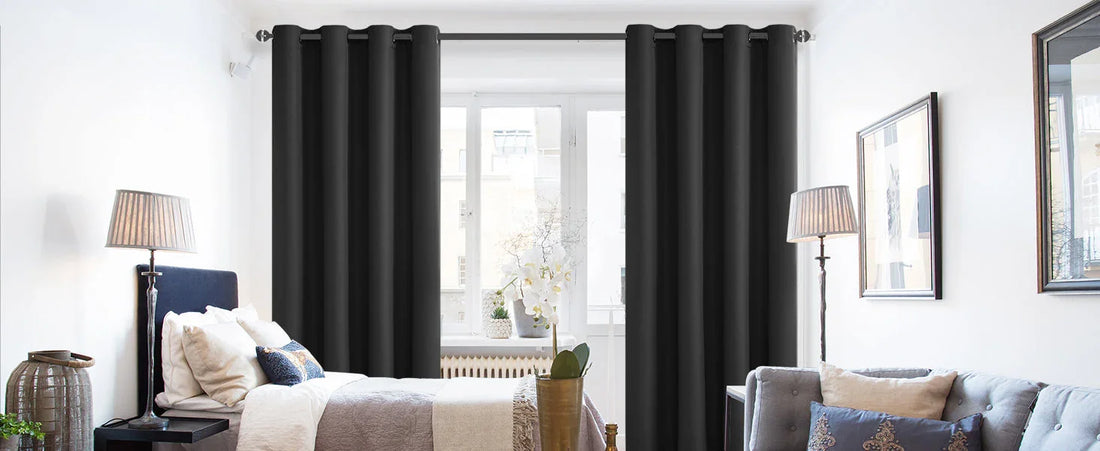The world produces over 380 million tons of plastic annually, and at least 8 million tons end up in our oceans each year. These staggering figures highlight a dual crisis: the environmental devastation caused by plastic pollution and humanity’s overreliance on virgin fossil fuels to produce synthetic materials like polyester. However, an innovative solution has emerged at the intersection of sustainability and textile innovation—recycled polyester curtains made from ocean plastics. This groundbreaking approach not only addresses urgent ecological challenges but also redefines the value of everyday products. Below, we explore the unique characteristics of polyester curtains and the revolutionary significance of repurposing marine plastic waste.
Part 1: The Unmatched Advantages of Polyester Curtains
Polyester, a synthetic fiber derived from petroleum, has long dominated the textile industry for its versatility and performance. When woven into curtains, it offers a suite of benefits that make it a preferred choice for both households and commercial spaces:
-
Durability and Longevity
Polyester fibers are inherently resistant to stretching, shrinking, and wrinkles. Unlike natural fabrics such as cotton or silk, polyester curtains retain their shape and structural integrity even after years of use, reducing the need for frequent replacements. -
Light and Color Retention
Polyester’s synthetic composition allows it to hold dyes exceptionally well, ensuring that curtains remain vibrant and fade-resistant even under prolonged exposure to sunlight. This makes it ideal for spaces that demand both aesthetics and functionality. -
Low Maintenance
Water-resistant and quick-drying, polyester curtains are easy to clean and resistant to mold and mildew—a practical feature for humid environments. Their lightweight nature also simplifies installation and handling. -
Cost-Effectiveness
Compared to organic textiles, polyester is more affordable to produce, translating to budget-friendly pricing for consumers without compromising quality.
Despite these advantages, traditional polyester production has a dark side: it relies heavily on non-renewable petroleum and generates significant carbon emissions. This is where the integration of ocean plastic recycling transforms polyester from a mere commodity into a catalyst for environmental change.
Part 2: The Revolutionary Impact of Ocean Plastic Recycling
Marine plastic pollution is one of the most pressing ecological crises of our time. Discarded fishing nets, bottles, and microplastics suffocate marine life, disrupt ecosystems, and leach toxins into the water. Recycling ocean plastics into polyester yarns offers a multifaceted solution:
1. Cleaning the Oceans, One Net at a Time
By collecting and repurposing marine debris—particularly abandoned fishing gear, which accounts for 10% of ocean plastic—companies actively participate in shoreline and oceanic cleanup efforts. For instance, organizations like The Ocean Cleanup and Bureo collaborate with coastal communities to retrieve plastic waste before it degrades into microplastics, turning a pollutant into a resource.
2. Closing the Loop on Plastic Waste
Recycled polyester (rPET) reduces dependency on virgin petroleum. Studies show that producing rPET generates 75% fewer carbon emissions than virgin polyester. When applied to curtains, this process creates a circular economy model where waste is perpetually reused, minimizing landfill contributions.
3. Raising Consumer Awareness
Products made from ocean plastics carry a powerful narrative. A curtain crafted from reclaimed fishing nets becomes more than a household item—it symbolizes the consumer’s commitment to sustainability. Brands like ECONYL® and SeaThreads leverage this storytelling to educate buyers about conscious consumption.
4. Technological Innovation
Transforming ocean plastic into high-quality polyester requires cutting-edge technology. The process involves sorting, cleaning, shredding, and melting plastics into pellets, which are then spun into fibers. Advances in purification techniques now ensure that even degraded marine plastics can be upcycled into durable, safe textiles.
The Synergy of Sustainability and Functionality
Ocean plastic-derived polyester curtains exemplify the harmony between ecological responsibility and industrial practicality. For consumers, they offer the same durability, aesthetic appeal, and affordability as conventional polyester—but with an added layer of ethical value. For manufacturers, adopting this model aligns with global sustainability frameworks like the UN’s Sustainable Development Goals (SDGs), particularly Goal 12: Responsible Consumption and Production and Goal 14: Life Below Water.
Moreover, the market potential is immense. A 2023 Nielsen report revealed that 66% of global consumers are willing to pay a premium for sustainable goods. By tapping into this demand, brands can drive profitability while fostering planetary health—a rare win-win scenario.
Conclusion: Weaving a Greener Future
The shift toward ocean plastic-based polyester curtains is more than a trend; it’s a paradigm shift in how we view waste and resource efficiency. By marrying the functional strengths of polyester with the moral imperative to heal our oceans, this innovation proves that sustainability and commerce can coexist.
As consumers, choosing such products empowers us to become stewards of the environment. As industries, adopting these practices signifies progress toward a circular economy where nothing is wasted—only transformed. Together, we can pull the curtain back on plastic pollution and let in a brighter, cleaner future.





